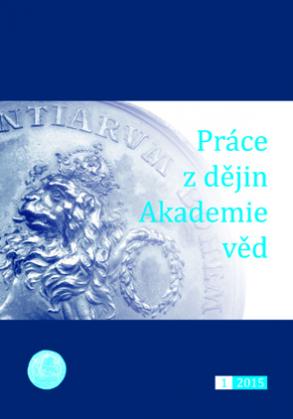Archeologická komise ČAVU a český dějepis umění v závěru 19. století
The CASA Archeological Committee and Czech art history in the late 19th century
Author(s): Kristina UhlíkováSubject(s): Archaeology, 19th Century, History of Art
Published by: AV ČR - Akademie věd České republiky - Masarykův ústav
Keywords: Archeological Committee of the Czech Academy of Sciences and Arts; catalogues of art manuscripts; art history historiography; Karel Chytil; Josef Hlávka;
Summary/Abstract: The Archeological Committee was set up as one of the special Czech Academy of Sciences and Arts standing commissions in 1893 out of a need to bolster heritage conservation at a provincial level. Its establishment matched the increasing interest in heritage at the end of the 1880s and the 1890s. The committee became the expert supervisor for heritage conservation and a research institute whose three sections established the foundations of archeology, ethnography and the history of art in Bohemia. Its plenum gave rise to the ideas and plan behind the most successful publishing project in the entire academy: the Historical and Artistic Heritage Catalogue, a work of art historical topography used to this day, which in over fifty volumes, maps out in detail the heritage in practically one half of Bohemia. The author of this plan was Karel Chytil, a leading figure in Czech art history at the end of the 19th century. In addition to the undoubted importance that the Heritage Catalogue was to have for conservation, Chytil and other Czech art historians at the time (Bohumil Matějka, Karel Boromejský Mádl, František Xaver Borovský and Jan Koula) understood very well that it would also form the basis for their systematic research and thus a keystone for art history. The inventorization of heritage items precisely mirrored the attempts in this field, as in other humanities disciplines at that time, to “scientify” its methods, to cease being “writing about art” and to achieve the status of a true science. At the end of the 19th century and at the beginning of the new century, the significance of the Catalogue was also seen at another important level. It was meant to be inspiration for creative artists at that time, for whom a thorough knowledge of domestic art was of crucial importance for their efforts to create a “national” artistic style. The Committee can be said to have set out a project that was unprecedentedly modern and fully comparable with contemporary European art history topographies, and yet at the same time it was enormously challenging, particularly in view of the personnel situation in the Czech history of art. However, a team that handled the project launch was successfully created in the Archeological Committee.
Journal: Práce z dějin Akademie věd
- Issue Year: 7/2015
- Issue No: 1
- Page Range: 30-47
- Page Count: 18
- Language: Czech

